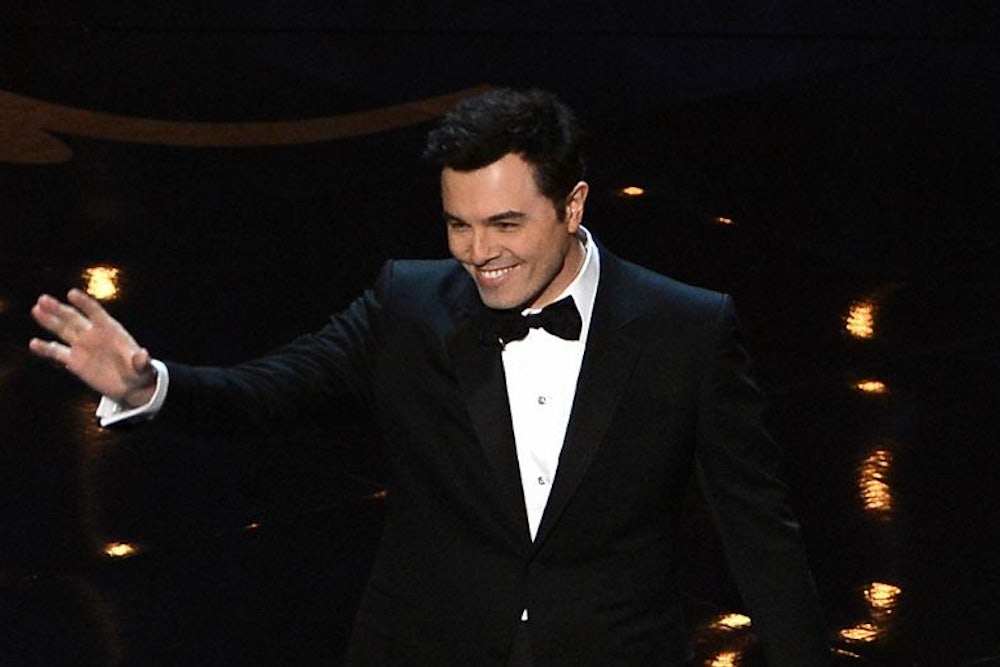When some of us were very young, the battle was fought to reveal female breasts in American movies. It had been alluded to in the 1920s and early ’30s with sheer silk chemises (say those three words over and over again—they are as potent as Viagra). Then came the era of bigger breasts, super-structured bras (thank you, Howard Hughes), and the conflicted anxiety about showing “too much.” I recall a Jayne Mansfield film, Too Hot to Handle (a flattering title), in which it was determined by bright-eyed censors working through the night that in one dress Jayne’s nipples could be discerned. This could not pass—but the scene was vital to “the story” (I know this is unlikely in a Jayne film, but go with the flow). So artists were hired to paint sequins in the danger zones on every frame of the problematic scene. This was work akin to the stonemasonry in Gothic cathedrals.
That suppressed panic gave way in the ’60 when breasts and even pubic hair were flashed around (the male organs of wonder were far less in evidence). Then along came pornography, where not only everything real was shown, but several things that seemed fabricated. For a moment, it looked as if one way or another we were grown up and relaxed about sex, including boobs and nips.
But as someone observed—it could have been McLuhan, Roland Barthes or Jerry Lewis, or me—with every medium we begin again. And so, it is risky now to open your computer or venture onto the internet without being subjected to boob talk, “wardrobe malfunctions,” and general tittification such as reminds me of the News of the World (rest its soul) in the late ’50s and the epochal picture of Christine Keeler apparently naked, sitting astride an Arne Jacobsen chair. The mood in the NoW, as ever, was, “Isn’t this disgraceful? Take a good look.”
So go to the websites of Yahoo, the Huffington Post, CNN, EW, and so many others and you can expect series of pictures (reaching beyond a hundred) of boob shots, nip moments, sideboob, awkward moments getting out of cars, and other costume slippages. Some young actresses or celebrities anxious to prolong their brief empire may sometimes dress to qualify for these series. Still, when Emma Watson or Anne Hathaway are getting out of a low-slung limo at a premiere, and gentlemen might fail to notice or mention whatever they’ve glimpsed, there is now a pictorial genre (like the pietas of old) of exposure. Except that the weird primness of the sites then blurs or blacks out the crucial area it is gaga over. Only today, I was seeking to delve into the Jodi Arias case and I found that websites were displaying some of the nude pictures of Arias that may have been taken just before she may have offed her guy. They were there, but with lewd black stickers stuck across the chest and crotch.
As you might expect, this insanity reached a depth at the most recent Oscars—and it is worth adding that Oscar himself, first drawn and cast in the late ’20s, is without sexual organs, though he does have a smooth chest. Anyway, the host, Seth McFarlane, sang a song, “We Saw Your Boobs,” which rather taunted actresses (some of them in the audience) for what they have shared in recent films. I don’t mean to sound stuffed (it’s a natural thing), but wasn’t there a feminist revolution within living memory and aren’t we capable of seeing and appreciating nudity (for example, Helen Hunt in The Sessions) without nudging each other like grown schoolboys from Monty Python? Too much of the American movie audience assumes that sex on screen is for voyeurs and dirty jokers. Yet there was a time, the late ’30s and early ’40s, when sex was seen as important, often amusing and for adults. Which is not the same as Adult.
Worst of all has been the assault on Anne Hathaway. There is an unquestioned urge in the media to get her and a campaign to depict her as hateful. I don’t know her. I’m not wild about her. I wouldn’t have given her an Oscar for supporting actress (Helen Hunt should have had it), but I sympathize with Hathaway. At the Oscars, she wore a pink gown, designed by Prada (as it happens, a late decision). As she said, on the red carpet, it was decent from the front and naughty from the back. In truth, the back was closer to ridiculous. But it was the front that came in for most flack. I don’t know how to describe dresses any better than breasts, but the sheath-like front had side darts that ended just about where her nipples were. She wore no bra—I know that’s not an original right in the Constitution, but we have learned to let the liberty evolve—and from time to time it was possible to see the outline of her nipples. So…? Have we never been on a beach?
There is a scene in Otto Preminger’s film Anatomy of a Murder in which, during the course of a murder trial, a pair of female panties is used as evidence. The judge (played by Joseph N. Welch) foresees embarrassed mirth in the audience—this was 1959—and tells those in court (and us in theatres) that the word “panties” is going to come into play. So laugh your dirty heads off and let’s move on. Women have breasts; it’s not really a sniggering matter. Many people like them and have been nurtured by them. They can betray the woman who owns them—like so many other parts of the body. So if we want to have breasts and an Internet and awards shows, get the laughing done with and let’s move on.
